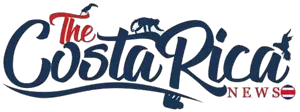A Metallic Makeover You Can’t Ignore
As of July 1, 2025, Costa Rica’s familiar gold-hued ₡500 coin has officially exited circulation, rendering those shiny pocket treasures obsolete for everyday transactions. Whether you’re paying for fresh gallo pinto in San José or a sunset cocktail on the Pacific coast, merchants will no longer accept the outgoing version.
Why the Central Bank Hit the ‘Refresh’ Button
The Banco Central de Costa Rica (BCCR) set a clear deadline to demonetize the old ₡500 and ₡50 coins earlier this year, aiming to modernize the national currency system and curb minting costs.
Here’s What the BCCR Focused On:
- Streamlining Size & Weight: Smaller, lighter coins for easier handling.
- Advanced Alloys: Copper-based blends resist corrosion and improve machine readability.
- Distinctive Bimetallic Look: Alternating silver-and-gold finishes to help users and vending machines distinguish denominations at a glance.
- Enhanced Security: Intricate engraving and multi-metal cores thwart counterfeiting efforts.
Saying Goodbye to Two Veteran Coins
It’s not just the ₡500 coin getting a makeover. The older ₡50 design has also been demonetized and replaced with a more compact, durable version. Both the outgoing coins served the economy faithfully, but rising production expenses and security concerns prompted the swap.
Durability Meets Cost-Efficiency
By adopting stronger, longer-lasting materials, the BCCR has cut down on frequent re-minting. These tougher alloys resist wear and corrosion far better than their predecessors, promising a markedly extended lifespan—and significant savings that can be reallocated to public services. bccr.fi.cr
Fort Knox–Level Features in Your Pocket
The new bimetallic coins boast cutting-edge anti-counterfeiting elements: micro-engraved text, multi-metal cores, and precise edge patterns. Each coin doubles as a miniature work of art and a robust barrier against forgery, reflecting Costa Rica’s commitment to currency integrity. bccr.fi.cr
Don’t Panic—Here’s How to Trade In
If you’ve uncovered stacks of obsolete ₡500 or ₡50 coins, you won’t lose a colón. Starting Wednesday, July 2, authorized banks—including branches of Banco de Costa Rica (BCR)—will exchange old coins free of charge. Each non-customer may swap up to ₡500,000 per visit.
Navigating Bank Visits: Tips and Tricks
- Plan for Wednesdays Only: Exchanges occur exclusively mid-week.
- Bring ID: A valid photo ID will speed up the transaction.
- Beat the Rush: Arrive early or choose smaller branches to avoid lines.
- Existing Clients: BCR customers often enjoy shorter wait times with their bank card in hand.
Tourist Alert: Spot the New Coins or Get Stuck
Visitors, take note: your tour guide or taxi driver may refuse outdated coins. Always inspect your change—especially in smaller towns—and if in doubt, hand old coins to a teller on a Wednesday rather than risking a transaction hiccup during your pura vida getaway.
Shopkeeper and Consumer Reactions
Local merchants report minimal disruption thanks to clear communication: “We retrained staff and recalibrated our cash drawers, but customers adapted quickly,” says an Alajuela supermarket manager. Consumers appreciate lighter pockets, even if some miss the heft of the old designs.
Economic Angle: Big Savings in Small Change
Analysts applaud the move: extended coin lifespans and reduced minting translate to millions of colones saved annually. Those funds can underwrite infrastructure projects or bolster social programs—proof that micro-level currency tweaks can yield macro-level benefits. bccr.fi.cr
Official Word from the Central Bank
In its public statement, the BCCR emphasized:
“Modernizing our coinage ensures Costa Ricans and visitors transact with confidence, backed by secure and durable money.”
Citizens and tourists alike can find branch locations and hours at www.bancobcr.com under “Locate Us.” bccr.fi.cr
Source link
Admin



